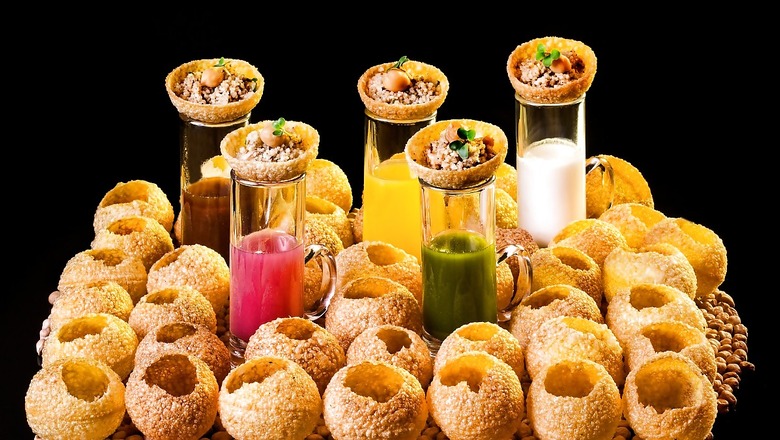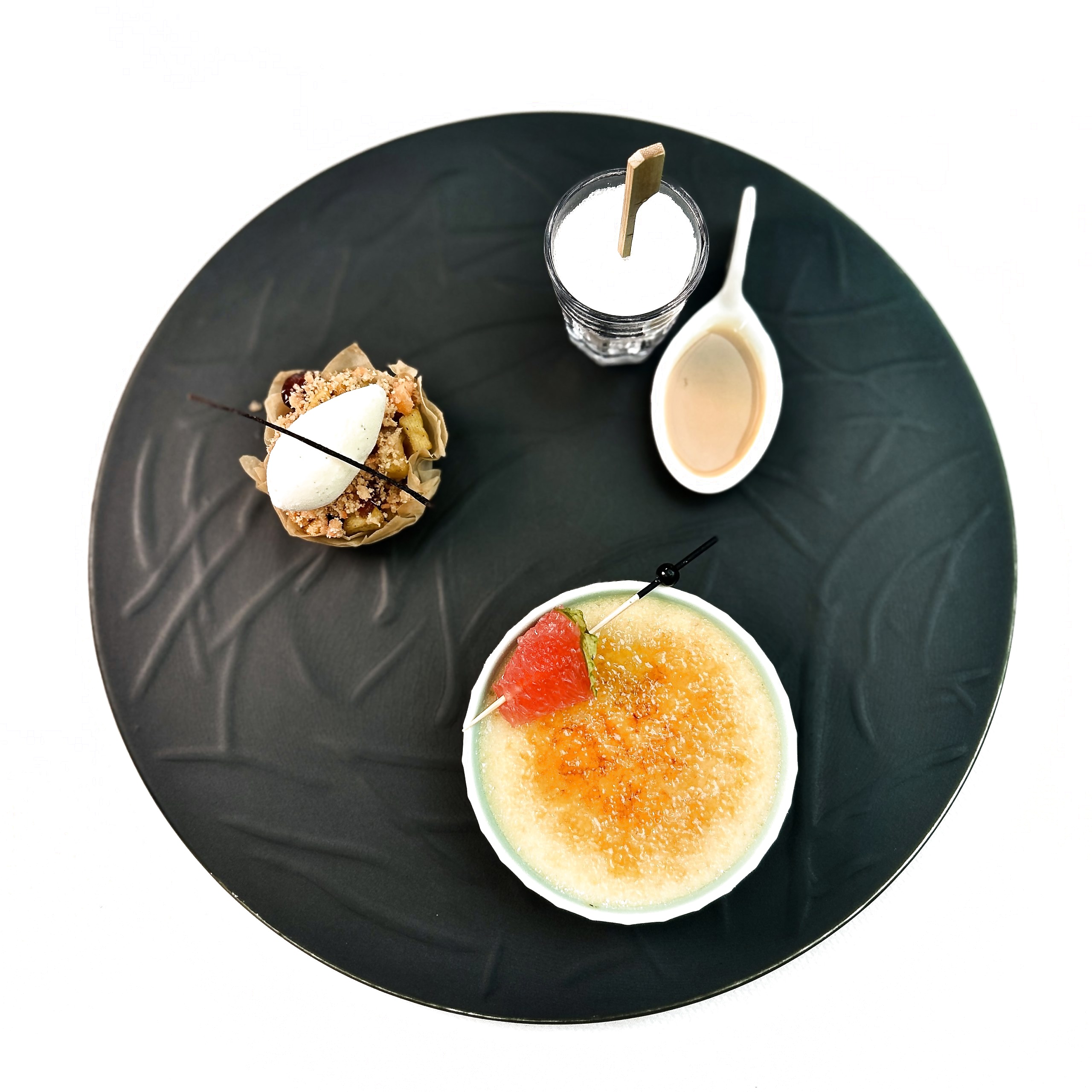
views
Indian Accent New Delhi celebrates its 15th anniversary by taking diners on a nostalgic culinary journey with a special flashback to its 2009 menu. The celebration is led by Executive Chef Shantanu Mehrotra, who has been with Indian Accent since its inception, and Chef Rijul Gulati from Indian Accent Mumbai. The menu features iconic dishes that have defined the restaurant’s innovative approach to Indian cuisine, including whole meal and semolina puchkas, paneer tikka chaat, panko-crusted bharwan mirch, tandoori Scottish salmon, and the playful Indian Accent sorbet served in a mini pressure cooker.
From its beginnings in 2009, Indian Accent has become a trailblazer in modern Indian cuisine, blending traditional flavors with contemporary techniques. Over the years, the restaurant has garnered international acclaim, putting India’s culinary prowess on the global map. The anniversary menu reflects this journey, offering a taste of the creativity and passion that have defined Indian Accent’s evolution. Whether it’s the vegetarian masala morels or the non-vegetarian garlic and khada masala roast chicken, each dish is a testament to the restaurant’s commitment to excellence and innovation in Indian cuisine. As Indian Accent marks 15 glorious years, it continues to celebrate its legacy of pushing the boundaries of what Indian food can be, all while honoring the flavors and traditions that have inspired its success.
We had the pleasure of speaking with Chef Shantanu Mehrotra, Executive Chef, Indian Accent, New Delhi, as the restaurant celebrates its 15th anniversary by revisiting its iconic 2009 menu.
What motivated you to bring back the 2009 menu for Indian Accent’s 15-year anniversary celebration?
The inspiration behind revisiting our inaugural menu was to evoke a sense of nostalgia. When we launched Indian Accent, our menu was a bold statement of what modern Indian cuisine could be—a blend of tradition and innovation. These dishes laid the foundation for our journey, challenging conventions and setting new standards in Indian dining. By bringing back these original creations, we are honoring the creative spirit and culinary vision that has defined Indian Accent since its inception. It’s a way for us to reflect on our roots while celebrating how far we’ve come. We want our guests to experience the same excitement and curiosity they felt when they first dined with us and to appreciate the evolution of our cuisine as it continues to push boundaries.
What makes Indian Accent’s menu unique compared to other Indian restaurants?
Our menu is distinguished by the thoughtful and innovative approach that underpins every dish. At Indian Accent, we seek to redefine traditional Indian cuisine by moving beyond the conventional notions of heavy oils and overpowering spices. Instead, we focus on a delicate balance where spices are used to enhance, rather than overshadow, the primary ingredients. This allows the true essence of the flavors to shine through, creating a more refined and sophisticated dining experience. Additionally, we integrate global techniques and influences into our dishes, further elevating the presentation and taste.

What are some of the highlight dishes from the 2009 menu being reintroduced?
Some of the standout dishes making a comeback from our 2009 menu include the Chicken Tikka Chaat & Khakra Mille Feuille with Shimla Mirch Mayo; Bharwan Mirch & Goat Cheese Mousse with Chilli Aam Papad Chutney; Rice Crusted John Dory Moilee, Local Greens & Pinenut Poriyal; Smoked Duck Shammi & Crispy Seviyan with Barberry Chutney; and the Masala Morels with Water Chestnut, Asparagus, and Paper Roast Dosai. Each of these dishes carries the essence of our early days, representing the creativity and innovation that defined our beginnings.
How do you think the culinary landscape in India has changed in the past 15 years, and how has Indian Accent contributed to this evolution?
When Indian Accent was launched in 2009, our goal was to break the monotony associated with Indian food, especially in the fine dining segment. We aimed to present Indian cuisine in a more refined, plated manner with global influences. Our approach also involved reintroducing traditional ingredients in a new light. International travelers, who were often wary of street food, found comfort in experiencing dishes like puchkas in the environment of a fine dining restaurant, where every element was freshly prepared and plated in an innovative way. By doing so, Indian Accent not only elevated the perception of Indian cuisine on the global stage but also set a new standard for how it could be experienced. Over the past 15 years, we’ve seen the culinary landscape in India evolve to embrace this blend of tradition and modernity, and we’re proud to have been at the forefront of this transformation.
What emotions or memories do you associate with the 2009 menu, and how do you hope guests will feel when experiencing it now?
Working on the 2009 menu brings back a deep sense of nostalgia. As we recreate these dishes, it’s not just about the flavors but also about the memories and emotions tied to them. The plating remains largely true to its original presentation, reflecting the journey we’ve taken to refine these dishes while preserving their essence. Regular patrons who have been with us since the beginning often find themselves reminiscing about their past experiences, recalling where they sat and what they enjoyed. It’s a sentimental journey for both them and us.
In what ways does the 2009 menu reflect the culinary trends of that time, and how does it compare to contemporary trends?
Back in 2009, the perception of Indian cuisine was quite rigid, with certain expectations about what a meal should include—like biryani or butter chicken. At Indian Accent, we challenged these norms. For instance, people were initially surprised to see our paneer presented in a ‘pinwheel’ style rather than the usual block smothered in spices. We explained that this unique presentation allowed the marinade’s flavors to permeate every bite, offering a much richer and more layered taste experience. This approach was a significant departure from the trends of that time, and it paved the way for the more innovative and diverse culinary trends we see today.




















Comments
0 comment